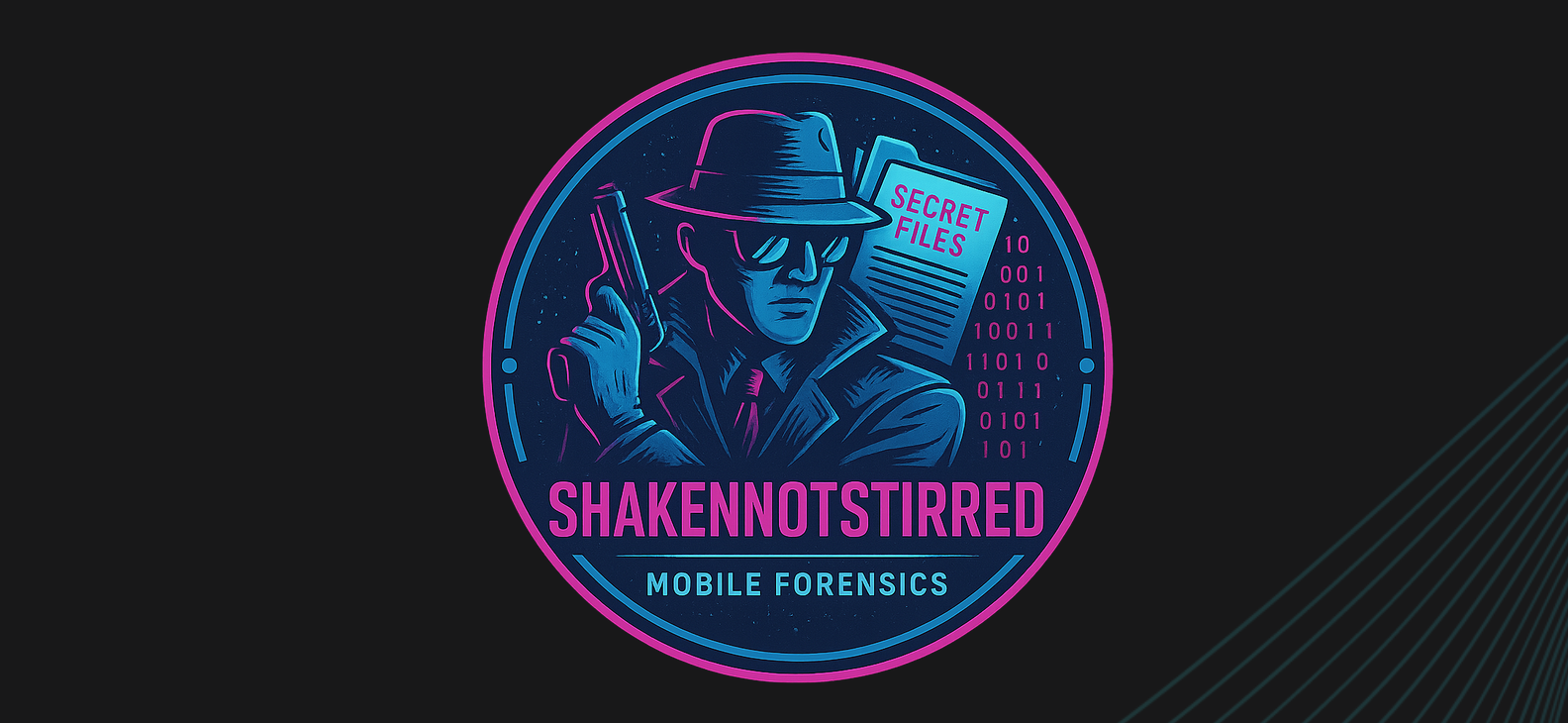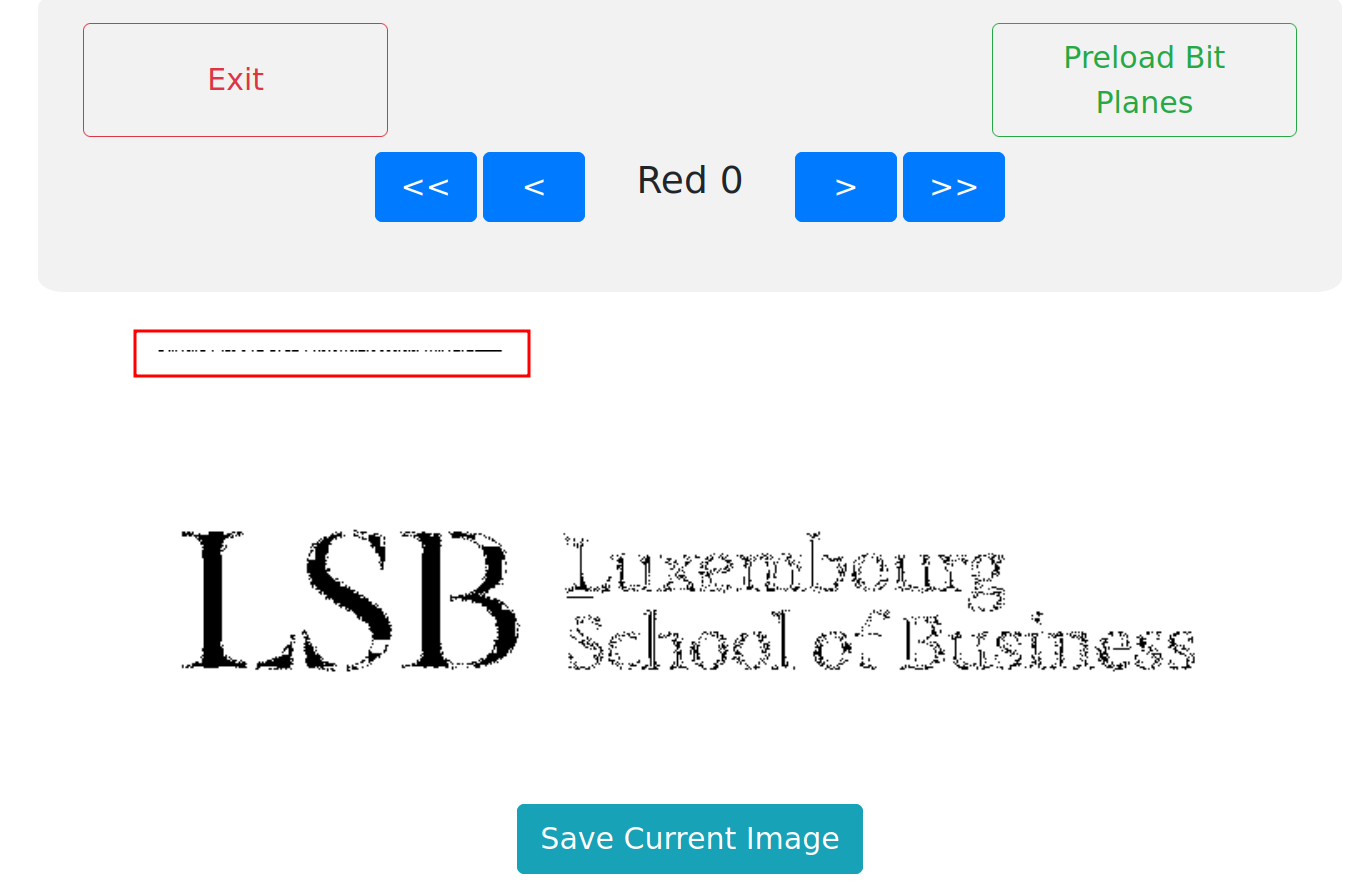Mobile Hacking Lab - Shaken, not stirred¶
Description: A spy has infiltrated a private intelligence company in Paris and was able to steal sensitive documents. Luckily, he is not a tech geek and could easily be tracked down by law enforcement 24 hours after infiltration. His mobile phone could be seized. However, it was damaged on purpose by the suspect and only a small fragment of user artifacts could be retrieved. The key for decrypting the flag could not be extracted. Are you able to find a way to decrypt it?
Link: https://www.mobilehackinglab.com/course/lab-shaken-not-stirred
Recon¶
Unzip the .zip file downloaded from course and let's take a tour into directories and files.
We were given a partial dump of a Samsung device with multiple artifacts (databases, notes, images, audio, SMemo, etc.). The mission was to decrypt the flag_mhc.enc file located in the SecureFolder directory.
Let's start analyzing the databases.
The first database is BrowserHistory.db located at:
Browser/data/com.sec.android.app.sbrowser/databases
SQLite version 3.44.4 2025-02-19 00:18:53
Enter ".help" for usage hints.
sqlite> .headers on
sqlite> .tables
history
sqlite> select * from history;
_id|url|title|visit_time|is_bookmarked
1|https://www.google.com/search?q=What+is+the+best+country+without+extradition|Google Search: What is the best country without extradition|1753930518358|0
2|https://www.google.com/search?q=Is+aes+encryption+secure|Google Search: Is aes encryption secure|1754015178358|0
3|https://www.google.com/search?q=Can+aes+be+broken|Google Search: Can aes be broken|1753988898358|0
4|https://www.google.com/search?q=What+are+best+aes+modes|Google Search: What are best aes modes|1753968018358|0
5|https://www.google.com/search?q=What+should+i+do+to+hide+data+in+an+android+phone|Google Search: What should i do to hide data in an android phone|1753969218358|0
6|https://www.google.com/search?q=Can+someone+find+data+within+an+encrypted+container+or+file|Google Search: Can someone find data within an encrypted container or file|1754003778358|0
7|https://www.google.com/search?q=Is+it+possible+to+detect+the+encryption+type|Google Search: Is it possible to detect the encryption type|1753960278358|0
8|https://www.google.com/search?q=Where+do+i+need+to+store+sensitive+files|Google Search: Where do i need to store sensitive files|1753945578358|0
9|https://www.google.com/search?q=What+is+the+best+sensitive+file+storage+method|Google Search: What is the best sensitive file storage method|1753877478358|0
10|https://www.google.com/search?q=Can+cloud+storage+providers+be+trusted|Google Search: Can cloud storage providers be trusted|1753874478358|0
11|https://www.google.com/search?q=Does+VPN+help+communicate+securely|Google Search: Does VPN help communicate securely|1753975218358|0
12|https://www.google.com/search?q=Top+10+best+VPNs+for+2025|Google Search: Top 10 best VPNs for 2025|1754022918358|0
sqlite>
We can see a lot of search about AES encryption and storing sensitive data.
Nothing useful here. So, let's see the next database file, which is samsung_notes.db located at db directory.
SQLite version 3.44.4 2025-02-19 00:18:53
Enter ".help" for usage hints.
sqlite> .headers on
sqlite> .tables
notes
sqlite> select * from notes;
id|title|content
1|Reminder|I have to meet Elian tomorrow
2|Travel|Flight to Paris 11:45 for 226 Euro
3|Luggage|Key on separate bag
4|Random Note|The quick brown fox jumps over the lazy dog.
5|Math|Pi is approximately 3.14159
6|Key Derivation|10000 Iterations
7|Idea|Building the future requires better questions.
8|Draft|Not all who wander are lost, some just like maps.
9|Reminder|key 32 bit
sqlite>
Here we can found a lot of useful information:
-
Key Derivation -> 10000 Iterations -> This may indicate the use of
PBKDF2. -
Reminder -> key 32 bit.
The rest of the information can be misleading and distract us from the challenge.
I saw a .wav file in Audio directory, with the name awful noise.wav.
After play this audio, Immediately notice that is Morse code.
We can decode this code in:
The content that have is: PBKDF2 WITH SHA256
This confirms the KDF algorithm.
Definition: *A Key Derivation Function (KDF) is a cryptographic algorithm that transforms a primary secret, like a password or master key, into one or more secure cryptographic keys.
KDFs strengthen weak inputs (such as passwords) and extract, expand, and format them into keys of the correct length and format, often using techniques like salting, hashing, and iterations to increase computational cost and resist brute force attacks.*
Let's now take a look at the images in Images directory:
Quickly, I noticed that there is an image named passphr1.png and also 2.png, 3.png, 4.png and 5.png which are QR codes that can be scanned.
You can use your mobile phone, but I prefer using zbar tool suite.
red If we use the same command for 2, 3, 4, 5 .png files, we can put together the passphrase.
KEY: red34DuckMango!#2022++
But we have more images in the directory that we must analyze.
I use https://georgeom.net/StegOnline tool for image inspection, and I noticed that the School.png image contains something in the bit planes.
This can been seen clearly in the Red 0:
So, let's use zsteg tool for extract all the data.
imagedata .. text: "\r\r(*.@DJ"
chunk:0:IHDR .. file: unicos (cray) executable
b1,r,lsb,xy .. text: "GxBY2Mzc3MhIQ=="
b1,rgb,lsb,xy .. text: "VDNybTFuNGxBY2Mzc3MhIQ=="
b2,r,msb,xy .. text: ["U" repeated 107 times]
[...]
[...]
[...]
We got VDNybTFuNGxBY2Mzc3MhIQ== text content, which decoding the content is T3rm1n4lAcc3ss!!
On the other hand, I saw that the image connect.png contains some credentials to connect via Wi-Fi
ctfStrongPass2025;; (not useful for the challenge). But, an useful image for inspect, is beautiful_thing.png, that contains a user comment.
Using the famous exiftool we can got the information:
Output:[...]
[...]
Green Tone Reproduction Curve : (Binary data 64 bytes, use -b option to extract)
Blue Tone Reproduction Curve : (Binary data 64 bytes, use -b option to extract)
User Comment : For3ns1cQ
Exif Byte Order : Little-endian (Intel, II)
Orientation : Horizontal (normal)
[...]
[...]
We got the For3ns1cQ word!
We already have enough information anyway, so given the time I've "wasted" investigating the rest of the information and clues the challenge gave, I'll decide to document the use of the outguess tool.
Let's look at the contents of the SMemo directory.
We see that there are two .snb files inside.
SNB files are primarily associated with Samsung's outdated S Note application, serving as archives for notes containing text, images, audio, and video.
This are like .zip files, so, you can unzip the content and take a look.
Inside, we have To do sunday and Gmail directory.
In both, we have an snb_thumbnailimage_001.jpg file.
The content of the images are:
-
Gmail-> Gmail Elos ivani -
To do sunday-> A list in To-Do format.- Installing anti forensic
- Picture hiding
- Gonna ask Jonathan
I fell into this rabbit hole, and after extensive analysis with steganography tools, I discovered the outguess tool.
I knew that for this I would have to find a password and thus extract information that would not be useful to solve the challenge.
After trying many of the combinations and variations of the information above, I realized that perhaps the words listed above might be helpful.
Since the contents of the "Gmail" directory contained ivani, that's the only reason I laughed that the IV would be inside the binary.
The password for:
-
SMemo/Gmail/snote/media/snb_thumbnailimage_001.jpg-> password:ivani -
SMemo/To do sunday/snote/media/snb_thumbnailimage_001.jpg-> password:anti.
We can use outguess for extract the binary inside:
And I even tried nybbles swapping (REF) with all the results we've had.But none of that worked.
Solution¶
I already had everything I needed to decrypt the flag with a script.
from pathlib import Path
from hashlib import pbkdf2_hmac
from cryptography.hazmat.primitives.ciphers import Cipher, algorithms, modes
from cryptography.hazmat.primitives import padding
import base64
CT = Path("SecureFolder/flag_mhc.enc").read_bytes()
IV = base64.b64decode("VDNybTFuNGxBY2Mzc3MhIQ==")
P = b"red34DuckMango!#2022++"
S = b"For3ns1cQ"
KEY = pbkdf2_hmac("sha256", P, S, 10000, 32)
dec = Cipher(algorithms.AES(KEY), modes.CBC(IV)).decryptor().update(CT) + Cipher(algorithms.AES(KEY), modes.CBC(IV)).decryptor().finalize()
unp = padding.PKCS7(128).unpadder()
pt = unp.update(dec) + unp.finalize()
print(pt.decode())
Flag: MHC{mobile_4n6_1s_N0T_TH4t_H4Rd}
I hope you found it useful (:

